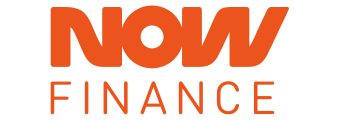What fees should you expect on a personal loan?
A personal loan is a flexible way to borrow money for things like home improvements, debt consolidation, or unexpected expenses.
Before committing to a loan, it's crucial to be aware of the different fees involved. These charges help lenders cover their expenses and the risks tied to lending. By understanding what fees you might face, you can plan your finances more effectively and steer clear of unexpected costs.
Generally, personal loan fees can be divided into three main types:
Upfront costs
Upfront costs are the fees you pay at the beginning of your loan, usually before or when the loan is funded. These charges can directly impact how much you receive or need to pay before using the loan funds.
Establishment fees
A one-time charge applied at the start of a loan to cover the lender's cost of setting up the account, assessing the application, and preparing the loan facility.
Documentation fees
A fee charged by the lender to cover the preparation, processing, and handling of loan documents. It includes administrative tasks such as drafting agreements, printing contracts, and organising required paperwork.
Encumbrance fees
These fees typically apply when purchasing a used vehicle with a personal loan, as they cover the cost of checking whether the car still has any outstanding finance attached. The check can be done by searching the Personal Property Securities Register (PPSR) for only a $2 fee.
Ongoing fees
These fees are recurring charges applied throughout the life of a loan, typically on a monthly or annual basis. Separate from interest, ongoing fees are intended to cover the bank's administrative costs for managing the account over time. These continue for as long as your loan is active and may be fixed or variable, depending on the loan agreement.
Annual fees
This is a recurring fee charged once per year to cover the administrative cost of maintaining the loan account over time.
Ongoing monthly fees
Ongoing monthly fees are charges applied each month for keeping the loan active. These fees may cover general administration, access to loan features, or customer support services.
Penalty fees
Penalty fees are imposed when a borrower fails to meet certain terms set by the loan agreement. They essentially serve as financial consequences for actions such as missing payments or paying off the loan early when not permitted. These charges are designed to discourage non-compliance and compensate the lender for potential losses or administrative burdens.
Late payment fees
These are charged when a scheduled repayment is missed or not made on time, compensating the bank for additional handling and risk.
Extra repayment fees
Extra repayment fees may apply when making payments above the required amount, especially on fixed-rate loans where early payments can affect interest calculations.
Early repayment fees
Early repayment fees are charged when the loan is paid off in full before the end of its agreed term, often to recover lost interest the lender would have earned.
Redraw fees
This charge applies when you withdraw extra repayments you've made on your loan, typically available through a redraw facility.
Early exit fees
Also known as break fees, these charges are applied when a borrower exits a fixed-term loan early, typically covering the lender's loss from interest rate changes or funding arrangements.
Is there a way to minimise or avoid personal loan fees?
While some personal loan fees are standard, understanding which fees apply and managing your loan carefully can help you avoid extra charges. Some effective tips to keep in mind include:
-
Explore offers from different lenders since fees can differ significantly from one provider to another.
-
Borrow only the amount you truly need to keep fees, often calculated as a percentage of the loan, as low as possible.
-
Work on boosting your credit score to unlock loans with better interest rates and fewer fees.
-
Set up automatic payments to avoid late fees. Some lenders even reward autopay with interest rate reductions.
-
Stay consistent with your monthly repayments to prevent penalties and avoid default charges.
-
Review all loan documents thoroughly before committing to understand any possible hidden or extra fees.
-
Select a trustworthy lender known for clear and upfront communication about fees and loan terms.
-
Make sure your account has enough funds to cover payments to avoid failed payment fees and related penalties.
How to compare personal loan fees across lenders
A key tool to help minimise costs is the comparison rate. This rate combines the loan's interest rate with most fees and charges, giving a clearer picture of the total annual cost of borrowing. By looking at the comparison rate instead of just the interest rate, you can better assess which loan is more affordable in the long run. Using comparison rates allows you to make smarter choices and avoid unexpected expenses.
You can compare personal loan offers side-by-side with InfoChoice to find competitive rates and low fees tailored to your needs. Use a personal loan calculator to estimate repayments and understand the total cost before applying.
Lender Car Loan Interest Rate Comparison Rate* Monthly Repayment Interest Type Secured Type Early Exit Fee Ongoing Fee Upfront Fee Total Repayment Early Repayment Instant Approval Online Application Tags Features Link Compare Promoted Product Disclosure
Promoted
Disclosure
Promoted
Disclosure
Promoted
Disclosure



